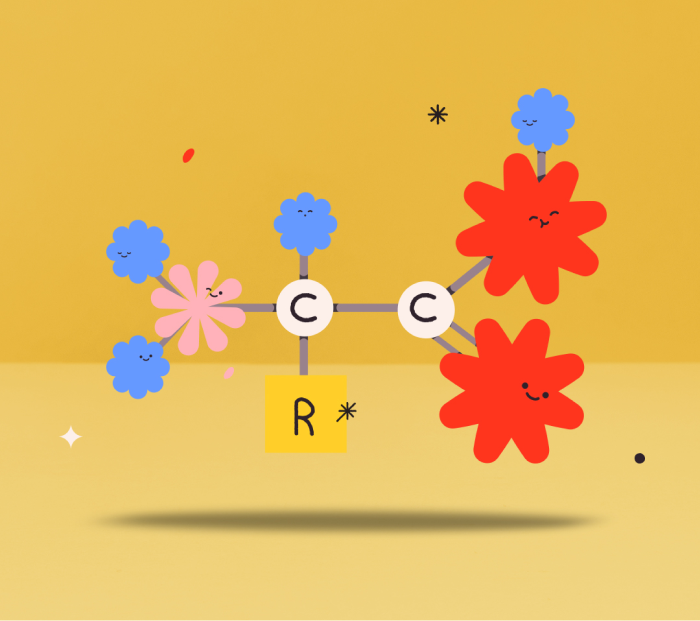What are amino acids?
Amino acids are the basic building blocks of protein, and there are 20 different types. There are essential amino acids and nonessential amino acids.
There are nine essential amino acids that are those essential for adults to consume as they cannot be made by the body.
They are:
- Histidine
- Isoleucine
- Leucine
- Lysine
- Methionine
- Phenylalanine
- Threonine
- Tryptophan
- Valine
There are 11 nonessential amino acids:
- Alanine
- Arginine
- Asparagine
- Aspartic Acid
- Cysteine
- Glutamic Acid
- Glutamine
- Glycine
- Proline
- Serine
- Tyrosine
The essential amino acids cannot be produced by the body, so they must come from food sources. The good news is that there are plenty of plant-based foods that provide all of the essential amino acids. Nonessential amino acids can be produced by the body, so they are not as critical for health.
However, it is still important to eat plenty of foods that contain all of the essential amino acids in order to ensure good health. Both essential and nonessential amino acids play a role in many bodily functions.
It is important that essential amino acids be part of your daily diet because your body can't produce them on its own; essential amino acids must come from food sources. Your body uses essential amino acids for necessary bodily functions such as building muscle and tissue and producing enzymes and hormones. The essential amino acids bulk up muscle and other tissues while others assist with brain function. Since the body cannot make essential amino acids, they must come from protein-rich foods.
Nonessential amino acids can be produced by the body so they are not as critical for optimal health. However, it is still a good idea to eat plenty of food containing essential amino acids because your body requires them to function properly. Nonessential amino acids typically play a role in energy production, metabolism regulation, and nutrient transport. Nonessential amino acids also assist with improving brain function. They're found in all protein-rich foods such as dairy products, meat, eggs, and plant proteins.

All the essential amino acids
you need in your next iced coffee.

All the essential
amino acids
you need in your
next iced coffee.
Benefits: Essential vs Nonessential Amino Acids
Essential Amino Acids
Histidine is essential for immune health and aids in the production of hemoglobin, which carries oxygen in red blood cells. Histidine helps produce essential neurotransmitters in the brain.
Isoleucine helps maintain lean muscle tissue, sustain energy levels, and promote optimal growth. It is essential for infants and growing children because it promotes healthy growth and development. However, adults need a small amount of this essential amino acid each day because they can produce isoleucine from other essential and nonessential amino acids consumed in the diet.

Leucine is essential for infants because it provides cells with energy and helps to build muscle. This essential amino acid promotes muscle growth by helping to increase and maintain mass. Leucine also assists in the production of hemoglobin and other essential blood components and activates enzymes in many bodily functions such as metabolism regulation, nutrient transport, and cellular function.
Lysine helps the body absorb and conserve calcium, build muscle, and keep the central nervous system working properly. It is essential for infants and growing children because it promotes healthy growth and development.

Methionine plays a key role in methylation which is essential for many bodily functions. It also helps the body remove toxins and reduces inflammation. However, most people obtain sufficient methionine from dietary protein sources such as eggs, lean meats, fish, and dairy foods.
Phenylalanine is essential for the production of essential and nonessential amino acids. It is essential only in infants, growing children, and women who are pregnant because their bodies need greater amounts than what can be obtained through regular food sources. However, most people obtain sufficient phenylalanine from dietary protein sources such as eggs, lean meats, fish and dairy foods.
Threonine is essential for the production of essential amino acids needed to form proteins. It assists with the growth and repair of tissues throughout the body, inside and out. Threonine also helps regulate hormones which are essential for normal metabolism. Threonine is essential for the proper functioning of the thyroid, liver, kidneys, and pancreas. Threonine helps with growth, mental function, and blood sugar regulation. It is essential for insulin resistance management and thus essential to regulate important metabolic functions such as protein synthesis.
Tryptophan is essential for healthy brain function by promoting neurotransmitter production like serotonin which improves mood and sleep quality or niacin that keeps you mentally sharp. Tryptophan essential also aids in the absorption of Vitamin B-6 which contributes to energy levels needed for exercise. It is essential for mental alertness and the prevention of Alzheimer's disease as well as Parkinson's disease.
Valine is essential for the production of essential and nonessential amino acids. It plays a role in promoting energy by helping to maintain blood glucose levels. Additionally, it helps the body break down fats and proteins so essential nutrients can be used as fuel for the cells. Valine is essential for preventing muscle wasting and essential for building lean tissue.
Nonessential Amino Acids
Alanine is essential for the production of essential amino acids needed to form proteins. It assists with the growth and repair of tissues throughout the body, inside and out. Alanine assists in detoxification, muscle building, and the formation of collagen. It is essential for heart health by breaking down fatty acids that can contribute to atherosclerosis.
Arginine helps form proteins and assists with the growth and repair of tissues throughout the body. It also aids the kidneys to remove waste products such as urea.
Asparagine helps form hemoglobin which carries oxygen in red blood cells. It also helps the body detoxify and reduce inflammation by producing essential amino acid citrulline. Like arginine, asparagine is essential only in infants and children; however, most people obtain sufficient asparagine through dietary protein sources.
Aspartic acid is needed to help enzymes work properly which are essential for cellular function, metabolism regulation, nutrient transport, immune health, and DNA formation. Aspartic acid (aspartate) is essential for cellular energy production, thyroid gland function, and tissue repair.
Aspartate is essential also in liver function because it aids in the processing of ammonia which is toxic to the body if not properly broken down.
Cysteine helps with immune function and maintains connective tissue which provides structure to the body's cells, organs and tissues. Cysteine is essential for detoxing processes because it forms glutathione which is essential to eliminating toxins from your body.
Glutamic acid is essential for the proper functioning of the central nervous system because it's used by neurons to communicate with each other through chemical signals called neurotransmitters. Glutamate is essential also for growth hormone release, glucose regulation, releasing energy from muscles during exercise, and maintaining blood pressure levels that are already in the normal range.
Glutamine is essential for your immune system and digestive health. It assists in nutritional support by promoting the absorption of essential nutrients such as essential amino acids, glucose, and vitamin B-12. Your body also uses glutamine to maintain blood sugar levels and heal small intestinal damage caused by Crohn's disease, ulcerative colitis, and celiac disease. Glutamine is essential for maintaining nutrient levels, growth hormone amounts, and liver health.
Glycine is essential for healthy skin and strong bones because it helps with collagen formation in the body. It is essential for mental alertness and the prevention of Alzheimer's disease as well as Parkinson's disease.
Proline is essential for building strong tissues in the eyes, heart, skin, and bones. It also helps form collagen which keeps essential structures such as skin firm and prevents sagging. Proline is essential in bone formation because it strengthens the structure of connective tissue in tendons and ligaments that attach bone to muscle. Proline is essential also to protein synthesis within cells which helps build muscle tissue for physical strength and growth.
Serine aids in muscle growth, tissue repair, bone strength, organ function, and energy production. Serine also protects against chemical toxins and stressors and combats depression and schizophrenia by boosting levels of dopamine which helps ease anxiety and maintain a good mood.
Tyrosine is essential for the production of melanin which is essential for skin health. It is essential also in hormone and adrenaline production which helps with energy levels, moods, mental alertness, and metabolism regulation.
Why is it important to get essential amino acids?
Getting an adequate amount of amino acids is essential because our bodies cannot produce all the amino acids necessary. We have to get essential amino acids from the food we eat. If there is not enough essential amino acid in your diet, your body will start to use essential amino acids that are stored in muscles for energy production. This can lead to loss of muscle mass, which means you won't get the full benefit of exercise even if you are eating a lot of protein.
Amino acid supplements such as essential amino acids can be very effective when added to regular diet or exercise programs to achieve greater results.
They can ensure optimal health benefits are achieved when combined with healthy nutrition, proper exercise programming, stress management, adequate rest/sleep & hydration.
Having enough essential amino acids in your body will make sure your body functions at its best when you need it most.
Tips for getting more essential amino acids in your diet
While essential amino acids are found in most foods, it's useful to know which ones are especially high in essential amino acids. Essential amino acids are found in most animal-based proteins and also plenty of plant-based foods.
Some of the best sources of essential amino acids include:
Tuna
Halibut
Flounder
Oysters
Salmon
Chicken Breast
Scallops
Turkey
Chicken
Eggs
Pork
Corn
Yogurt
Rice
Bean Sprouts
Quinoa
Tofu
Chickpeas
Lentils
Seeds
Nuts
Most cold-water fish is rich in essential amino acid oils, but some might contain too much mercury, so consult your doctor on how much you can safely eat each week.
Grains like wheat, oatmeal, buckwheat, quinoa, brown rice, wild rice, and amaranth also provide essential amino acids but are not as concentrated as animal sources.
Soy and legumes like black beans and peas (kidney, lima, pinto) soybeans (edamame), chickpeas, lentils, and peanuts contain essential amino acids, but less than some other plant-based forms of protein.
How much essential amino acid do I need?
The amount of essential amino acids you actually need is based on your body weight. Generally speaking, the average healthy adult needs at least 0.8 grams per kilogram of protein each day to maintain muscle mass with a well-balanced diet that contains a variety of foods from all essential food groups.However, the recommended allowance is for 2.2 pounds or 1kg body weight.
Regardless of your age, gender, or activity level, essential amino acids play a crucial role in not only building lean muscle mass but keeping skin firm and strong as well as fighting fatigue and keeping you mentally sharp. Having essential amino daily will help your body perform at its best when you need it most!
Are you getting enough of these essential amino acids?
Deficiency is rare, except in cases of malnutrition or starvation. Essential amino acid deficiency can make food less appetizing although everyone is affected differently. Some other effects are reduced physical performance, reduced exercise capacity, low energy, or reduced stamina, delayed recovery from exercise/injuries, and difficulty sleeping.


























